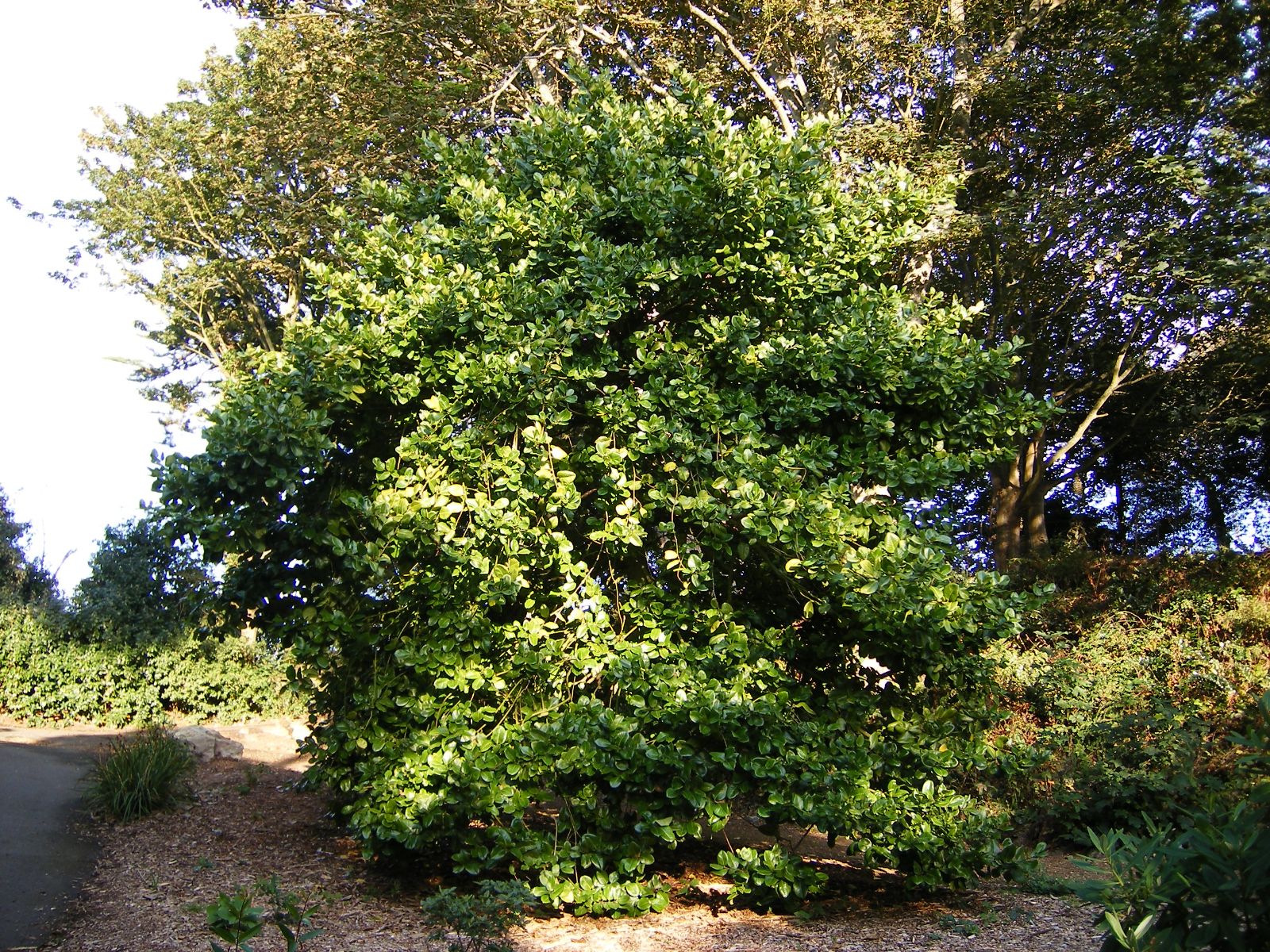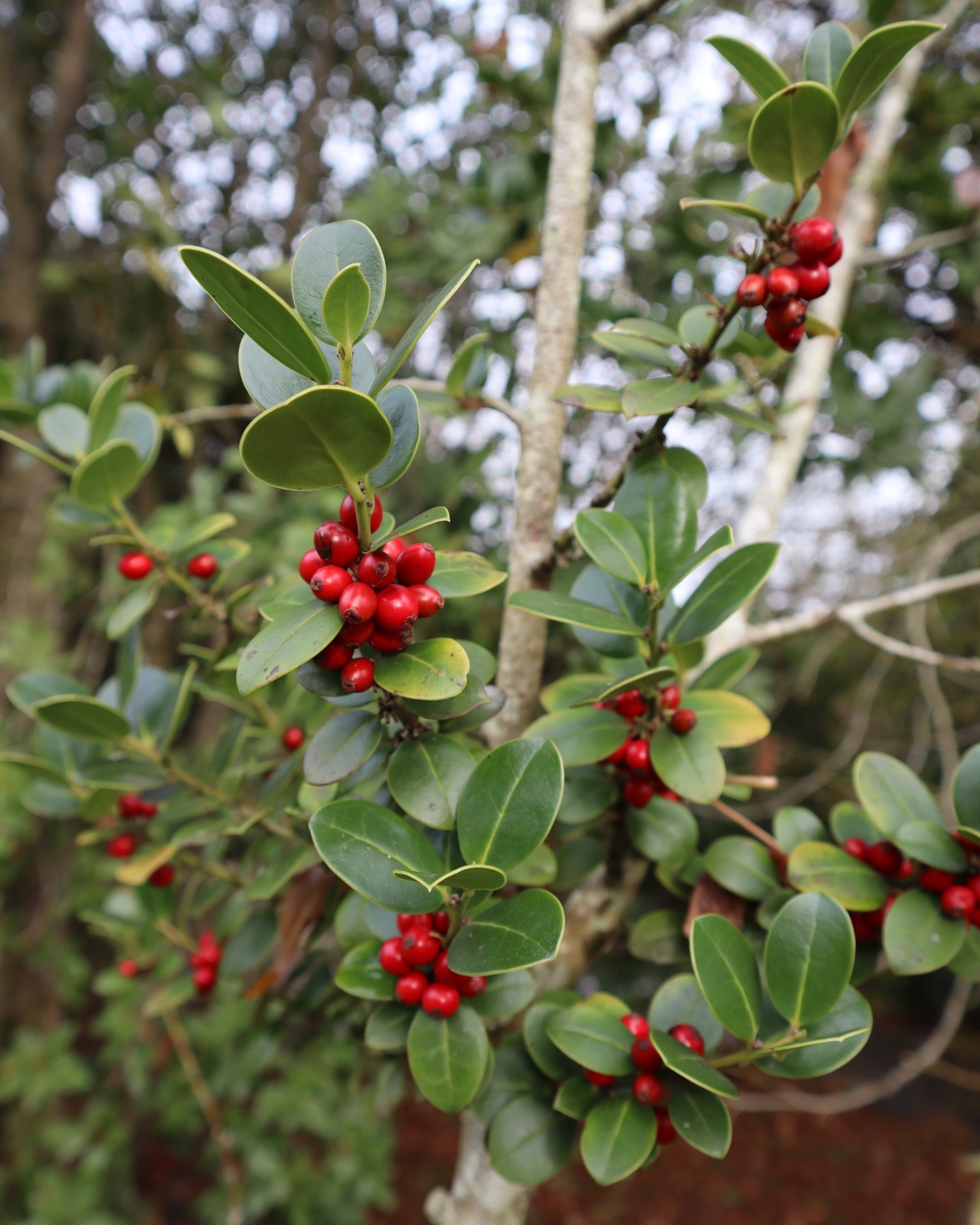Ilex perado
Credits
Article from Bean's Trees and Shrubs Hardy in the British Isles
Recommended citation
'Ilex perado' from the website Trees and Shrubs Online (treesandshrubsonline.
Infraspecifics
Other taxa in genus
- Ilex × altaclarensis
- Ilex aquifolium
- Ilex bioritsensis
- Ilex buergeri
- Ilex cassine
- Ilex ciliospinosa
- Ilex corallina
- Ilex cornuta
- Ilex crenata
- Ilex cyrtura
- Ilex decidua
- Ilex dipyrena
- Ilex fargesii
- Ilex forrestii
- Ilex geniculata
- Ilex glabra
- Ilex hayatana
- Ilex hookeri
- Ilex integra
- Ilex intricata
- Ilex kingiana
- Ilex laevigata
- Ilex latifolia
- Ilex linii
- Ilex macrocarpa
- Ilex melanotricha
- Ilex mitis
- Ilex montana
- Ilex nothofagifolia
- Ilex opaca
- Ilex pedunculosa
- Ilex pernyi
- Ilex purpurea
- Ilex rotunda
- Ilex rubra
- Ilex rugosa
- Ilex serrata
- Ilex shennongjiaensis
- Ilex spinigera
- Ilex verticillata
- Ilex vomitoria
- Ilex yunnanensis
An evergreen tree, hardy in the warmest parts of the British Isles, with deep green leathery leaves of variable shape, oval, obovate or rounded, 21⁄4 to 4 in. long, 11⁄8 to 21⁄4 in. wide, sometimes entire, sometimes with spine-tipped teeth near the apex, more rarely spiny throughout, apex acuminate and spine-tipped or often blunt or rounded, base wedge-shaped or slightly heart-shaped, decurrent onto the leaf-stalk, venation usually prominent beneath; leaf-stalk winged owing to the decurrence of the blade, grooved beneath, 3⁄16 to 5⁄8 in. long. Fruits ellipsoid to globose, red, about 3⁄8 in. wide.
Native of Madeira, with varieties or subspecies in the Canary Islands and the Azores; cultivated in Britain since 1760. It thrives very well in the Isle of Wight and in Ireland, and no doubt in other mild parts. It has been confounded with I. aquifolium and has hybridised with it in gardens (see I. × altaclarensis). It differs from I. aquifolium in the distinctly winged leaf-stalk, at each side of which there is a groove beneath, but this character shows up clearly only on dried specimens. The leaves are mostly entire and the spines, when present, are shorter and usually forward-pointing. Also the venation is usually prominent beneath and the leaves are mostly longer and relatively wider.
From the Supplement (Vol. V)
This species is studied by Susyn Andrews in Kew Bulletin, Vol. 39 (1), pp. 141–55 (1984). She recognises four subspecies:
subsp. perado I. maderensis Lam.; I. perado var. maderensis (Lam.) Loes. – Native of Madeira.
subsp. platyphylla (Webb & Berth.) Tutin I. platyphylla Webb & Berth.; I. perado var. platyphylla (Webb & Berth.) Loes. – Native of the Canary Islands. It does not occur on Madeira as stated on page 450.
subsp. azorica (Loes.) Tutin I. perado var. azorica Loes. – Native of the Azores, where it has become very rare.
subsp. iberica (Loes.) S. Andrews I. perado var. iberica Loes. – A native of Spain and Portugal. This subspecies is in need of field study. Specimens from the Iberian peninsula resembling I. perado are referred to I. aquifolium in Flora Europaea.
For an interesting account by Miss Andrews of her field studies in the Atlantic islands see International Dendrology Society Year Book 1982 pp. 69–72 and op. cit. 1983, pp. 111–18.
var. azorica Loes.
Synonyms
I. p. subsp. azorica (Loes.) Turin
Leaves small, 1 to 2{1/4} in. long, ovate, elliptic or rounded, entire or with very few forward-pointing spines. Azores.
var. platyphylla (Webb & Berth.) Loes.
Synonyms
I. platyphylla Webb & Berth.
I. aquifolium var. platyphylla Dallim., in syn., not T. Moore nor Goeppert


